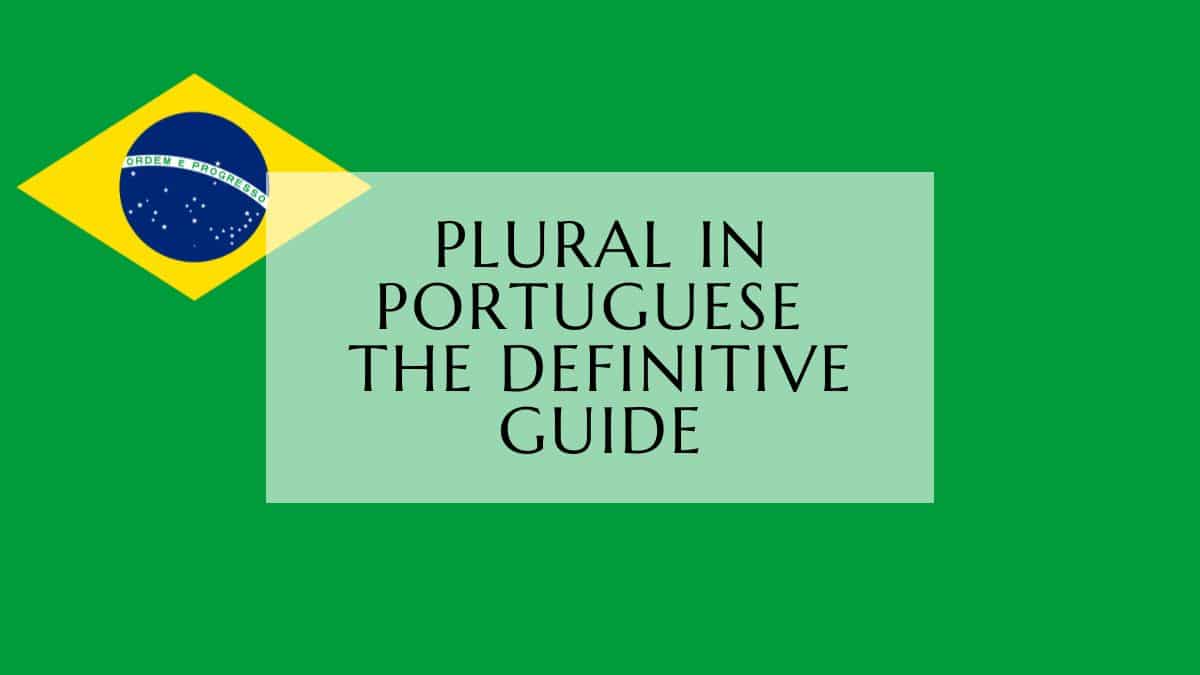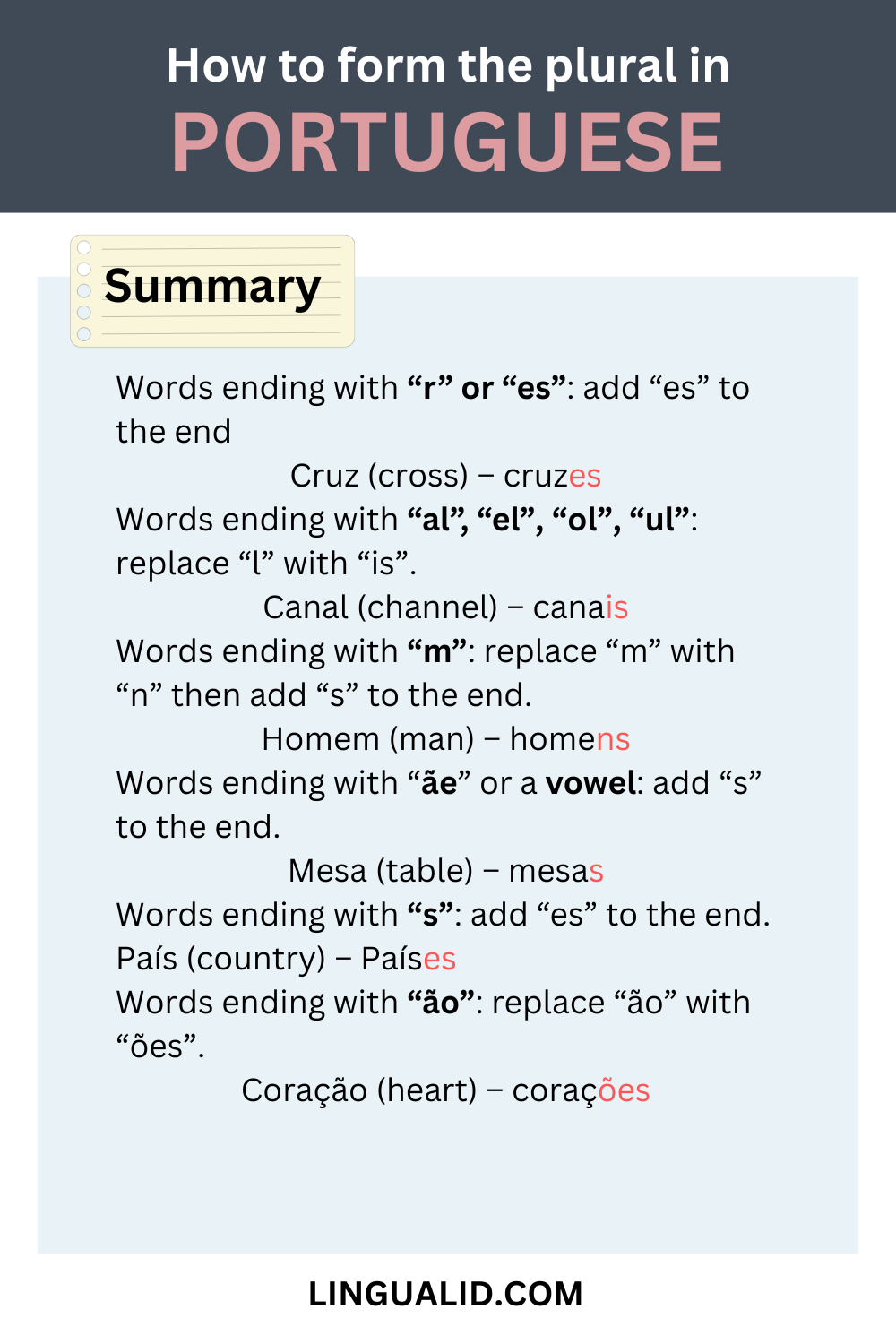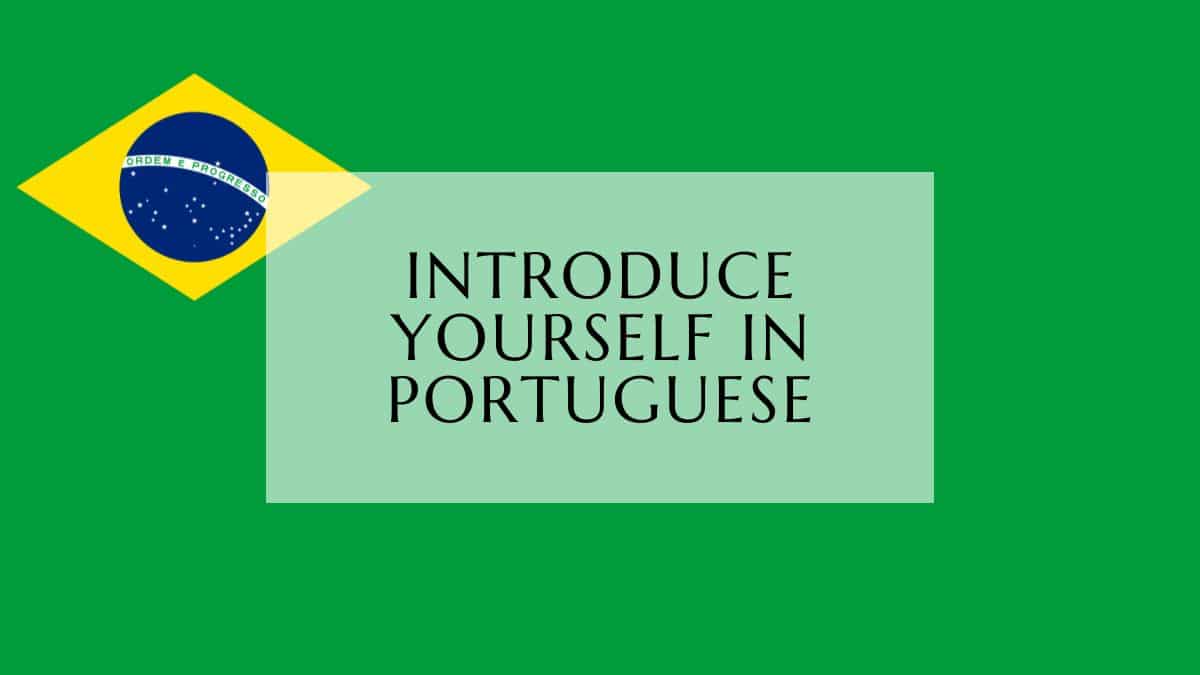In this lesson, we will talk about the plural in Portuguese, how to form them, and some irregular forms. followed by examples.

Plural in Portuguese
First of all, I like to make it clear that forming the plural in Portuguese doesn’t follow a one single rule, that depends on the endings and there are of course some irregulars, in this guide we will talk about the main forms.
Form 1: Words ending with “r” or “es”: add “es” to the end
Examples:
- Cruz (cross) – cruzes
- Mar (sea) – mares
Form 2: Words ending with “al”, “el”, “ol”, “ul”: replace “l” with “is”.
Examples:
- Canal (channel) – canais
- Pastel (pastry) – pastéis
Exception: mal (bad) – males
Form 3: Words ending with “m”: replace “m” with “n” then add “s” to the end.
Example: Homem (man) – homens
Form 4: Words ending with “ãe” or a vowel: add “s” to the end.
Examples:
- Mesa (table) – mesas
- Mãe (mother) – Mães
- Linda (beautiful) – lindas
Form 5: Words ending with “s”: add “es” to the end.
Examples: País (country) – Países
Some words like “o lápis” (pencil) keep the same form in plural: os lapis
Form 6: Words ending with “ão”: replace “ão” with “ões”.
Examples:
- Coração (heart) – corações
- Leão (lion) – leões
Some exceptions:
- Mão (hand) – mãos
- Cão (dog) – cães
Note: you can practice what you’ve learned here, and learn how to pronounce each of the words in our Memrise course here, don’t know how to use the platform or sign up? we’ve got you covered in this easy-to-follow tutorial here.

Practice what you’ve just learnt and try to form the plural of some nouns that we’ve seen.
Portuguese Plural Formation Study Guide
Quiz
Instructions: Answer the following questions in 2-3 sentences.
- What is the general rule for forming the plural of Portuguese nouns ending in “-al,” “-el,” “-ol,” or “-ul”?
- Which Portuguese noun ending in “-l” is an exception to the general rule for forming plurals? What is the plural form of this word?
- Explain the two steps involved in forming the plural of Portuguese nouns ending in “-m.”
- What is the rule for forming the plural of Portuguese nouns ending in a vowel or “-ãe”? Provide two examples.
- How do you form the plural of the Portuguese noun “país”? What category of plural formation does this fall under?
- What is the most common way to form the plural of Portuguese nouns ending in “-ão”? Provide two examples.
- List two exceptions to the general rule for forming the plural of nouns ending in “-ão.” Provide both the singular and plural forms.
- What happens to the noun “lápis” when forming the plural? Why is this noteworthy?
Answer Key
- To form the plural of Portuguese nouns ending in “-al,” “-el,” “-ol,” or “-ul,” you replace the “-l” with “-is.”
- The word “mal,” meaning “bad,” is an exception. Its plural form is “males.”
- To form the plural of Portuguese nouns ending in “-m,” you first replace the “-m” with “-n” and then add “-s” to the end. For example, “homem” (man) becomes “homens.”
- To form the plural of Portuguese nouns ending in a vowel or “-ãe,” you add “-s” to the end. Examples include “mesa” (table) becoming “mesas” and “mãe” (mother) becoming “mães.”
- The plural of “país” (country) is “países.” This falls under the rule for words ending in “-s,” where you add “-es” to form the plural.
- The most common way to form the plural of Portuguese nouns ending in “-ão” is to replace “-ão” with “-ões.” Examples include “coração” (heart) becoming “corações” and “leão” (lion) becoming “leões.”
- Two exceptions to the “-ão” rule are “mão” (hand), which becomes “mãos,” and “cão” (dog), which becomes “cães.”
- The noun “lápis” (pencil) remains the same in its plural form. This is noteworthy because it defies the general rule of adding “-es” to words ending in “-s.”
Happy learning!
Oualid Cheddadi is the founder of Lingualid, a platform that inspires independent language learners worldwide, regardless of the language they are learning. The name “Lingualid” is derived from the Portuguese word for “language,” “língua,” and the last three letters of Oualid’s name, “Lid.”



